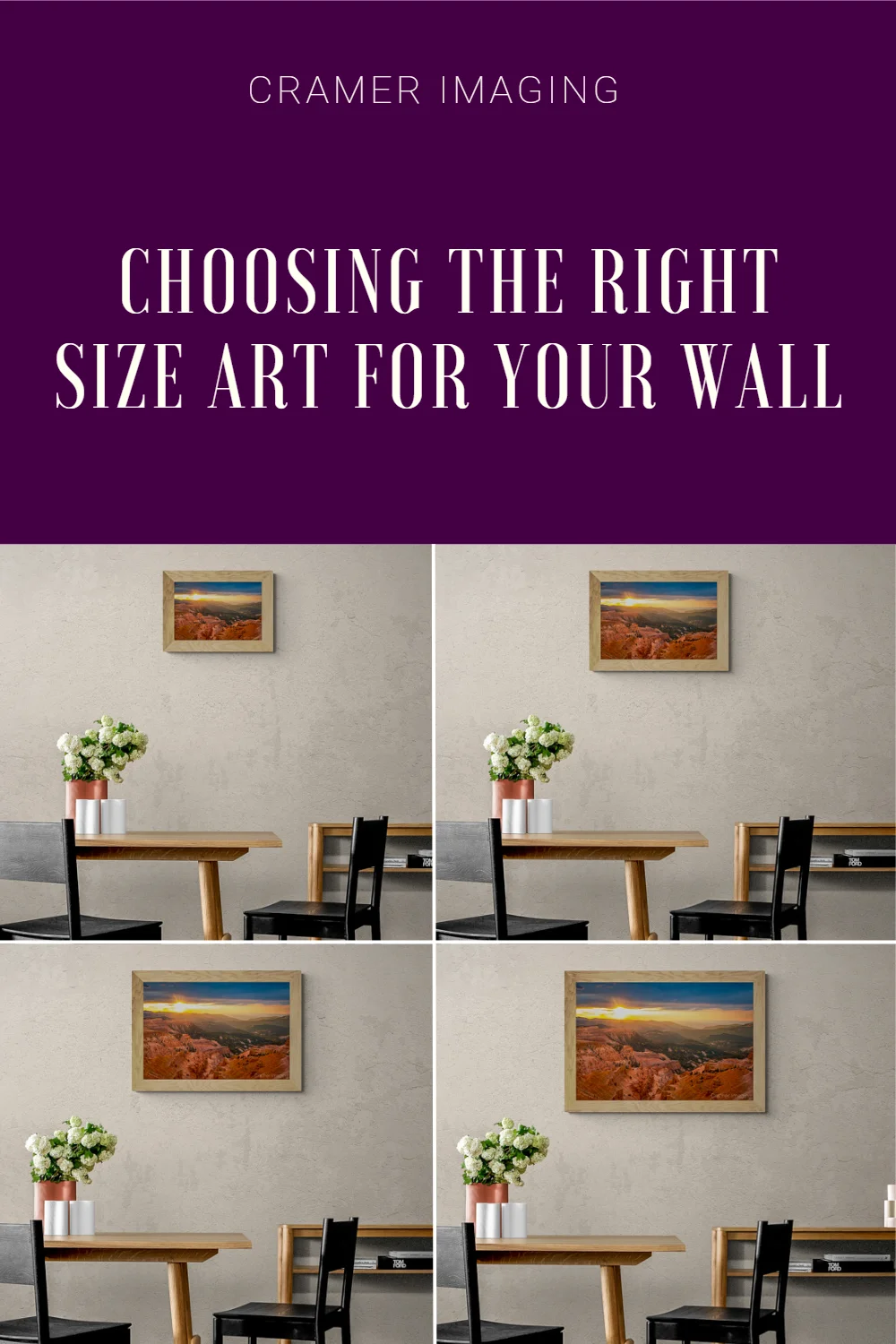Choosing the Right Size of Art for Your Wall
Shop

Now that you have the dimensions of your display area, you know what you have to work with. You know that a large area can support one large statement piece of several smaller pieces of art in gallery wall pattern. If you have a small area, you know that you can only display a small piece of art in the area. So let’s discuss buying the right size of art for your wall.
So, you’re in the market for some new fine art for your wall. Do you have any idea what size(s) will work for the wall and furniture you have? Do you know where to start there? All of us at Cramer Imaging would like to share some tips to help you decide on this important fine art size decision. We’ll figure out the right size of art for your wall.

Get The Dimensions Of Your Display Area

Choosing the right size of fine art for your wall depends the most upon how much space you have on said wall to display the art. This is going to vary based upon what your particular wall dimensions are and what furniture you have on that wall as well. Because of this, the first step is to get the dimensions of the display area you have to work with.
You will need the measurements to be in the standard units which your nation uses if you plan on purchasing something domestic. If you want to purchase something from a different country or overseas, you will want to get your measurements in the standard units of measure that the nation uses where you are purchasing your art from.
Simply put, if purchasing in the United States, use inches. If purchasing from a European country, use centimeters. Always double check your measurement standard just in case the other is being used. Smart art providers/sellers will offer dimensions in both standard and metric, but don’t count on it every time.
What Do You Have To Work With?
Your next assessment needs to be your surrounding decor. If you have lots of little pieces of artwork surrounding the area you wish to display a new piece on, then you might consider using more smaller pieces of art. You could also pick out a larger statement piece which coordinates with what you already have.
If you don’t have much in the way of artwork or you are redecorating with all new art, then you have a few more options. A large statement piece would seem a logical choice but that could depend upon your furniture.
Remember that it is important to have some blank wall space around the area which your picture will be occupying. This is called negative space. It’s unwise to choose a size of fine art which will cover the entire wall. Our eyes need that negative space to focus in on what the subject of the artwork is. However, too much negative space will make your picture look small and insignificant. Strike a balance point with it in your particular arrangements.
What Sizes Are Available?
When it comes to fine art, there are a few options as far as size. You can find fine art as small as postcard sized and you can find it super huge such as 40×60 inches wide. It will depend upon what kind of art you are seeking.
If you are going for an original piece, such as a painting, you’re limited to the size of the original work. It’s different with fine art photography or fine art prints. You’ll find multiple sizes available to fit almost any size of wall you have.

Common sizes for artwork prints will include: 4×6, 5×7, 8×10, 11×14, 16×20, 16×24, and 20×30 inches. Many of these sizes may necessitate cropping of the photo if purchasing fine art photography. Larger sizes of art may be available by request or by default.
Conclusion
Make your decision carefully. Once you do, it’s time to proceed with your fine art shopping. This is the fun part. Next week, we will discuss the shopping process and what to look for when you are buying fine artwork.
Best Sellers
Cramer Imaging Newsletter

Receive monthly updates in your inbox from us.








